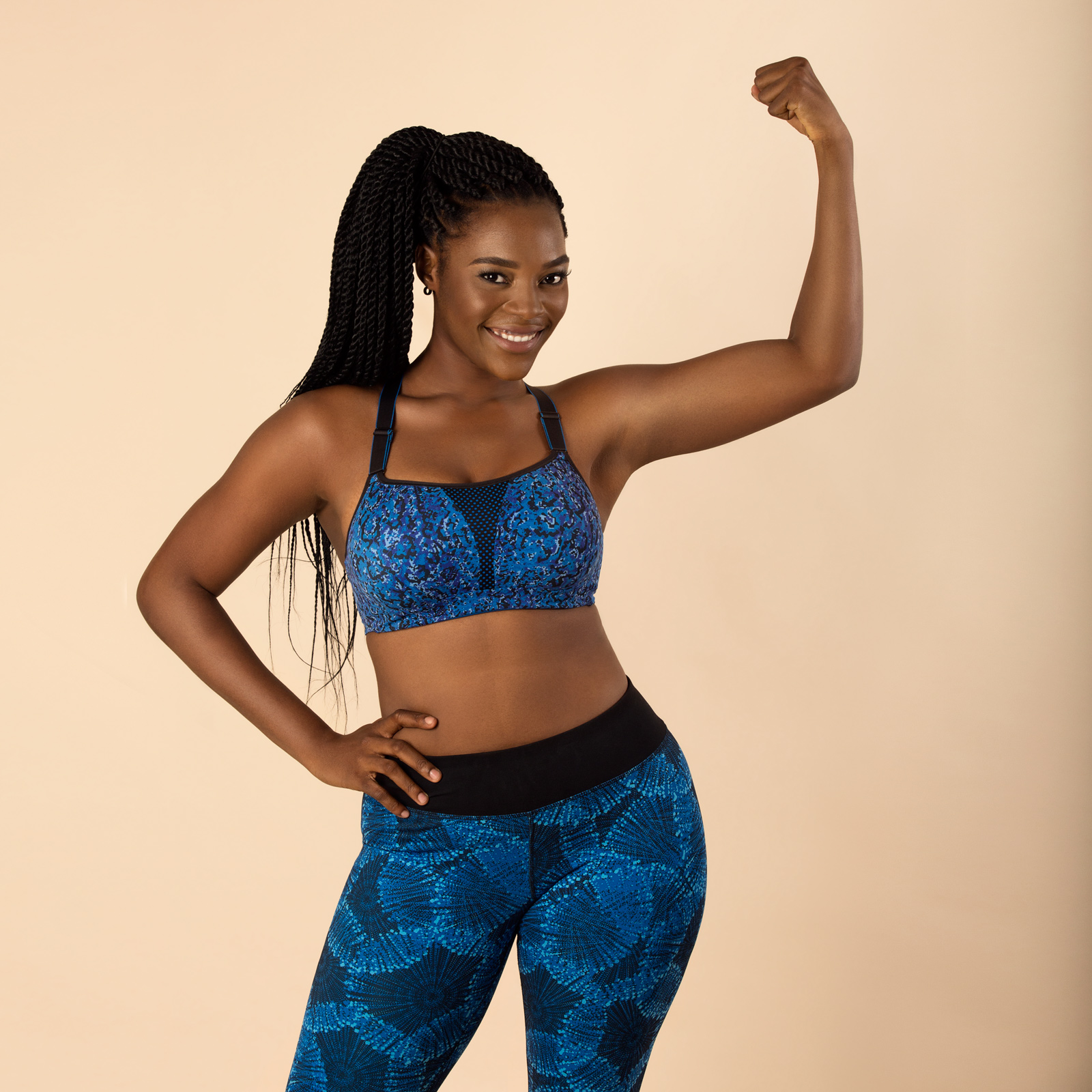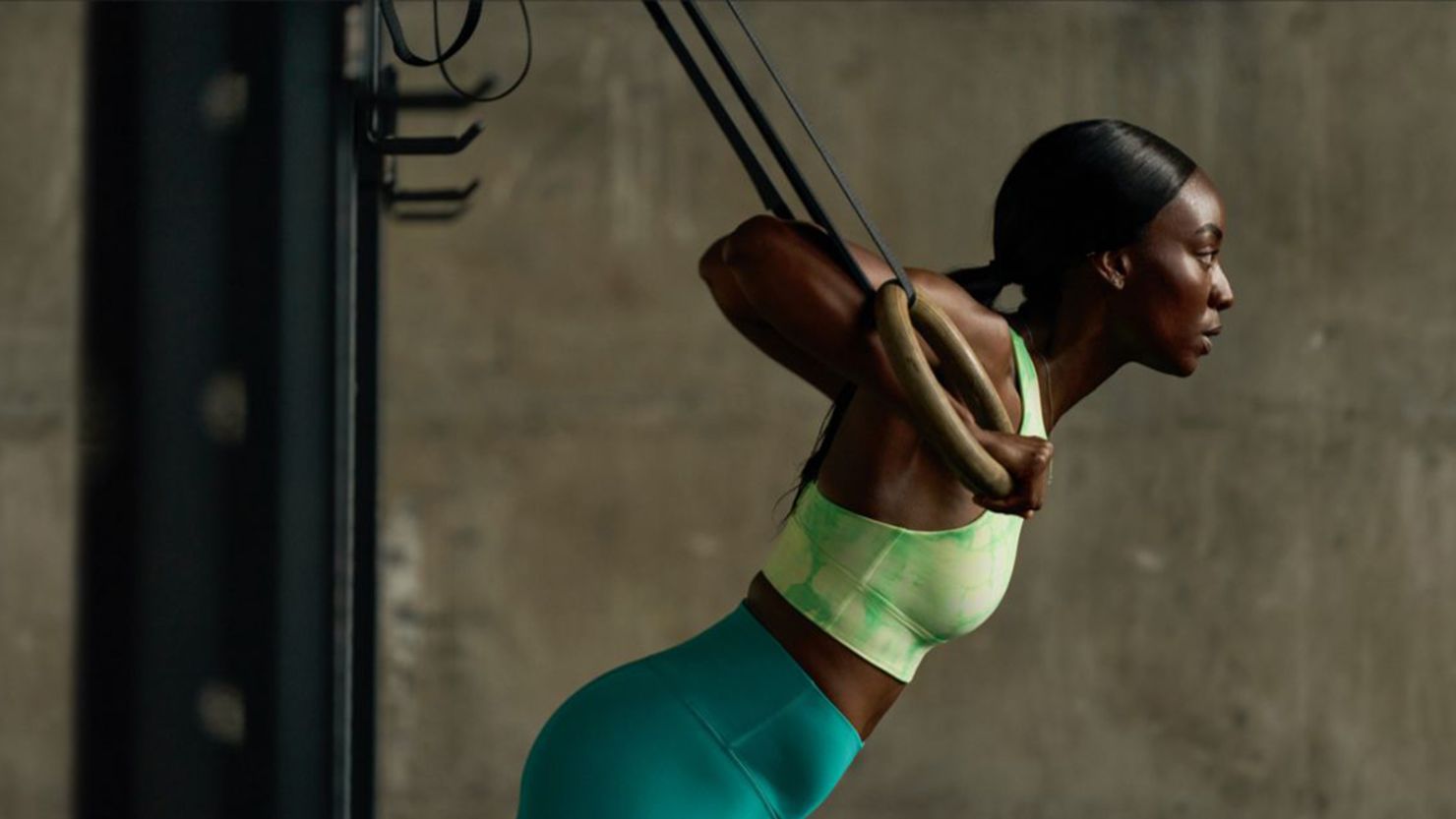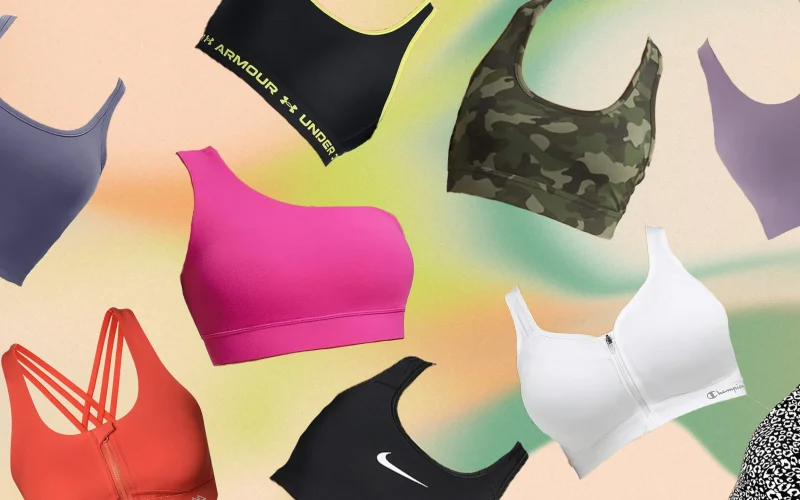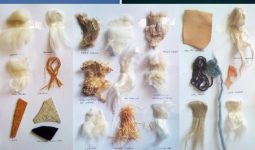Choosing the right sports bra can significantly enhance your comfort and support during physical activity.
You may have noticed that not all sports bras are created equal, and there’s a good reason for it.
The design and construction of these bras vary to cater to different types of movement and intensity levels.
Whether you’re into yoga, running, or strength training, there’s a sports bra built to offer you the optimal blend of compression and flexibility required by your chosen workout.
Understanding the various types of sports bras available is essential in selecting one that suits your body and your exercise routine.
Features like moisture-wicking fabric, adjustable straps, and proper cup size all contribute to the functionality of a sports bra, ensuring it provides the necessary support without restricting your movements.
With the right sports bra, you can confidently focus on your exercise goals, knowing that you are well-supported.
Understanding Sports Bras

When selecting a sports bra, considering the right fit, support level, and material composition maximizes both your comfort and performance during physical activities.
Importance of the Right Fit
Finding the perfect fit for your sports bra can significantly impact your comfort and physical activity.
A well-fitting sports bra should snugly contain your chest without causing constriction or discomfort.
For accurate sizing, measure both your band size (under the bust) and cup size (across the bust).
This ensures the bra provides adequate coverage and support without restricting movement or breathing.
Understanding Support Levels
Sports bras come in various support levels depending on the intensity of the activity:
- Low Support: Ideal for activities like yoga or stretching.
- Medium Support: Great for moderate activities like cycling or hiking.
- High Support: Necessary for high-impact activities such as running or aerobics.
Assess the elasticity and design features, such as underbands and straps, to determine the support level.
Remember to adjust your sports bra choice with the level of motion involved in your activities to maintain support and minimize movement.
Different Sports Bra Materials
The materials of a sports bra influence its functionality and how it interacts with your body.
Common materials include:
- Polyester: Durable and lightweight, often used in moisture-wicking fabrics.
- Nylon: Resilient and soft, providing a comfortable fit.
- Spandex: Highly elastic, it enhances the sports bra’s stretchability for better movement.
These fabrics often blend to strike a balance between fit, flexibility, and breathability.
Choose moisture-wicking fabrics to help keep you dry and comfortable during intensive workouts.
Different Types of Sports Bras

Sports bras are designed to reduce breast movement and minimize potential discomfort during physical activities.
Depending on your activity level and breast size, you might find one type more suitable than another.
1. Compression Sports Bras
Compression sports bras are a popular choice for low-impact activities.
These styles work by pressing your breast tissue firmly against the chest, creating a smooth silhouette.
They’re typically pulled over your head and great for yoga and stretching activities.
2. Encapsulation Sports Bras
Unlike compression bras, encapsulation sports bras have individual cups that surround and support each breast separately.
This style is ideal if you have a larger cup size and need support for medium-impact activities like jogging or cycling.
Encapsulation sports bras help to maintain the shape of your breasts while providing excellent support.
3. Combination Sports Bras
Combination sports bras offer compression and encapsulation for those who need extra support during high-impact activities, such as running or aerobics.
This hybrid style gives you the snug fit of a compression bra with the defined shaping of an encapsulation bra, ensuring your breast tissue is secured and supported from all angles.
Features of Sports Bras
When you’re looking for the ideal sports bra, comfort, fit, and support are critical.
You want to prevent discomfort and chafing while ensuring everything stays in place.
Let’s explore how different features contribute to these essential aspects.
Strap Design
Sports bras can have various strap designs to provide you with the right amount of support and stability.
Racerback straps offer greater support and help reduce bounce, making them a good choice for high-impact activities.
On the other hand, wider straps distribute weight more evenly, which can reduce pressure on your shoulders.
If you need versatility, adjustable straps allow you to find the perfect fit for your body, ensuring maximum comfort and minimizing the risk of sagging or discomfort.
Band and Underwire
The band of a sports bra is crucial because it provides most of the support.
A snug but comfortable band helps maintain stability without causing discomfort.
Some sports bras include an underwire for added support, which is especially beneficial for those with larger busts.
However, a sports bra with a wide, secure band may offer better support for high-impact exercises without the risk of the underwire digging into your skin.
Padding and Lining
Proper padding and lining contribute to coverage and comfort. Moisture-wicking fabrics in the lining can help keep you dry and comfortable during intense workouts.
Padding can provide additional shape and coverage, preventing show-through.
Some sports bras offer removable padding, allowing you to customize the fit and feel.
Always choose materials and padding that won’t compromise your movements or lead to chafing.
Selecting the Right Sports Bra

To maximize comfort and performance, choosing the right sports bra is crucial.
Whether you’re taking a leisurely walk or engaging in high-intensity training, keep in mind the activity level, your breast size, and the impact level of your workout.
By Activity Level
For activities like yoga, hiking, and walking, a low-impact sports bra is typically sufficient.
These bras usually have less compression and offer a range of motion. When you engage in dancing, cycling, or skiing, look for a medium-impact sports bra that balances flexibility with support.
For rigorous activities such as running, mountain biking, and high-intensity workouts, opt for a high-impact sports bra designed to reduce movement and provide significant support.
By Breast Size
- If you have smaller breasts, a compression sports bra will likely provide adequate support and may feel more comfortable.
- Those with larger busts, such as a D cup or larger, should consider encapsulation sports bras which offer individual cups for better support and definition.
By Impact Level
Low impact sports bras are optimal for activities with minimal bounce, such as pilates or walking.
For sports that involve more movement but not excessive bouncing, like aerobics or dancing, medium impact sports bras are a good match.
Lastly, for high-motion sports such as boxing or running, ensure maximum support and reduced breast movement with a high impact sports bra.
Caring for Sports Bras
Proper maintenance of your sports bras ensures comfort during your workouts and extends their life.
Let’s get into the specifics of keeping your sports bras in prime condition.
Washing and Drying
Washing: Always check the care label; different materials and fabrics may have specific instructions.
In general, it’s best to hand wash your sports bras using mild detergent.
If you opt for a machine wash, place them in a lingerie bag and select a gentle cycle with cold water to prevent stretching or warping.
- Fasten hooks to avoid snagging
- Use a gentle, non-bleach detergent
- Wash with similar colors
Drying: Avoid the dryer, as high heat can break down the elasticity of the bra.
Instead, gently squeeze out excess water without wringing and lay the bra flat to dry.
If your sports bra is made of quick-drying fabric, it should air dry relatively quickly.
- Do not wring out; press out water gently
- Lay flat or hang to dry
- Keep out of direct sunlight
Lifespan and Replacement
Sports bras don’t last forever. With regular use, you should replace your sports bras every six months to a year, depending on the frequency of usage and the quality of the bra.
Pay attention to signs of wear such as:
- Stretched out bands or straps
- Faded labels
- Fabric that has become thin or pilled
If your sports bra no longer feels supportive or fits improperly, it’s time to find your fit with a new one.
Remember, a well-cared-for sports bra supports you better and contributes to a comfortable and effective workout.
Common Issues and Solutions
Finding the right sports bra can be challenging, but addressing common issues can enhance your comfort and workout performance.
Improvements in fit and design help prevent discomfort, chafing, and potential injury, ensuring your exercise routine remains a positive experience.
Dealing with Chafing and Discomfort
Chafing often results from friction caused by repetitive movement while wearing a poorly fitted sports bra.
To combat this, seek sports bras with flat seams or a seamless cup design.
If chafing persists, consider applying an anti-chafing balm to the affected areas prior to exercise.
Additionally, choosing moisture-wicking fabrics can help reduce irritation by keeping the skin dry.
Resolving Sizing Problems
A common cause of sports bra issues is incorrect sizing, which can lead to pain or soreness.
Use a soft tape measure to accurately measure your rib cage and bust to find the right size.
Ensure that the band feels snug but not too tight; you should be able to slide two fingers under the band without difficulty.
The straps should be adjustable and comfortable without digging into your shoulders for proper support.
Visit resources such as Verywell Fit for guidance on finding your ideal size.
Preventing Long-Term Damage
Chronic pain or injury from inadequate sports bra support can affect your breast ligaments and overall breast shape.
Offer your breasts the support they need by choosing a sports bra designed for your activity level.
High-impact activities require more support to minimize movement and protect your ligaments from stretching.
If you experience regular discomfort, it’s essential to reassess your sports bra’s fit and possibly consult with a fitting expert to prevent long-term damage.
Additional Considerations
When selecting a sports bra, it’s important to consider how it will fit your unique body type, complement your style as athleisure wear, and fit into your budget with brand and price comparisons.
Sports Bras for Various Body Types
Different body types require different levels of support. If you have a fuller bust, you might find that sports bras with encapsulated cups offer the breast support you need, especially during high-impact physical activities like jumping or running.
On the other hand, smaller busts may get sufficient support from compression bras, which tend to hold the breasts close to the chest to reduce movement.
Remember, the right fit can boost your confidence and comfort while exercising.
Athleisure Wear and Style
Your sports bra can be a fashion statement as part of your athleisure wear. Whether you’re attending a yoga and pilates class or running errands, you don’t have to compromise on style.
Mesh panels improve breathability to reduce sweat and add a trendy look.
Some sports bras come with pockets to hold your phone securely, combining functionality with style.
Feel good and look great, whether you’re in the gym or out and about.
Brand and Price Comparisons
Price and brand often go hand in hand, but higher cost doesn’t always equate to better quality.
It’s worth it to compare brands like Brooks or others you’re eyeing.
Look for reviews or comparison charts that highlight differences in durability, comfort, and support.
Sometimes, finding a bra that doesn’t cause wrinkles after washing or retains its elasticity can be more valuable than choosing one based on the brand name alone.
Remember to check for added features, such as removable cookies or pads, which can also influence your decision.








